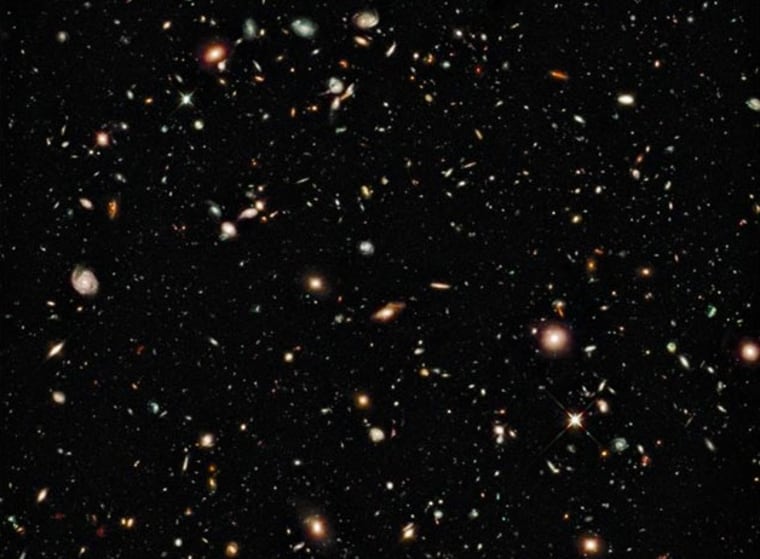The revamped Hubble Space Telescope has spied what might be the oldest, most distant galaxies yet seen, astronomers announced today.
The faintest and reddest objects in the new Hubble images are galaxies that formed 600 million years after the theoretical Big Bang, which occurred about 13.7 billion years ago. So these objects are located about 13.1 billion light-years from Earth.
Observations of early galaxies can help astronomers learn what conditions were like in the universe's early years.
Two teams of astronomers from the United Kingdom took images of galaxies in the early universe with Hubble's brand new Wide Field Camera 3 (WFC3), which can take highly sensitive measurements in the infrared.
Infrared light is light invisible to the human eye, with wavelengths about twice as long as (and so redder than) visible light.
"The expansion of the universe causes the light from very distant galaxies to appear redder, so having a new camera on Hubble which is very sensitive in the infrared means we can identify galaxies at much greater distances than was previously possible," said team member Stephen Wilkins, a postdoctoral researcher in astrophysics at Oxford University.
The new images from the Hubble Space Telescope (HST), taken in August over four days, include the region of sky known as the Hubble Ultra Deep Field.
"Hubble has now revisited the Ultra Deep Field which we first studied five years ago, taking infrared images which are more sensitive than anything obtained before. We can now look even further back in time, identifying galaxies when the Universe was only 5 percent of its current age — within 1 billion years of the Big Bang," said team member Daniel Stark, a postdoctoral researcher at the Institute of Astronomy in Cambridge.
Another recent survey, conducted with the Subaru Telescope in Hawaii, found 22 of the earliest galaxies to form in the universe, with one confirmed to have an age that puts it just 787 million years after the Big Bang.
So far, the most distant object yet observed is a gamma-ray burst — the most violent explosions in the universe — located more than 13 billion light-years from Earth.
Astronomers can look forward to seeing such distant, early galaxies in even more detail in a few years, the team members noted. Hubble received its final overhaul last May, when astronauts made repairs and installed the new Wide Field Camera 3 and other new tools.
"These new observations from HST are likely to be the most sensitive images Hubble will ever take, but the very distant galaxies we have now discovered will be studied in detail by Hubble's successor, the James Webb Space Telescope, which will be launched in 2014," said Jim Dunlop of the University of Edinburgh.
The teams presented their findings in a series of papers in the journal Monthly Notices of the Royal Astronomical Society.
